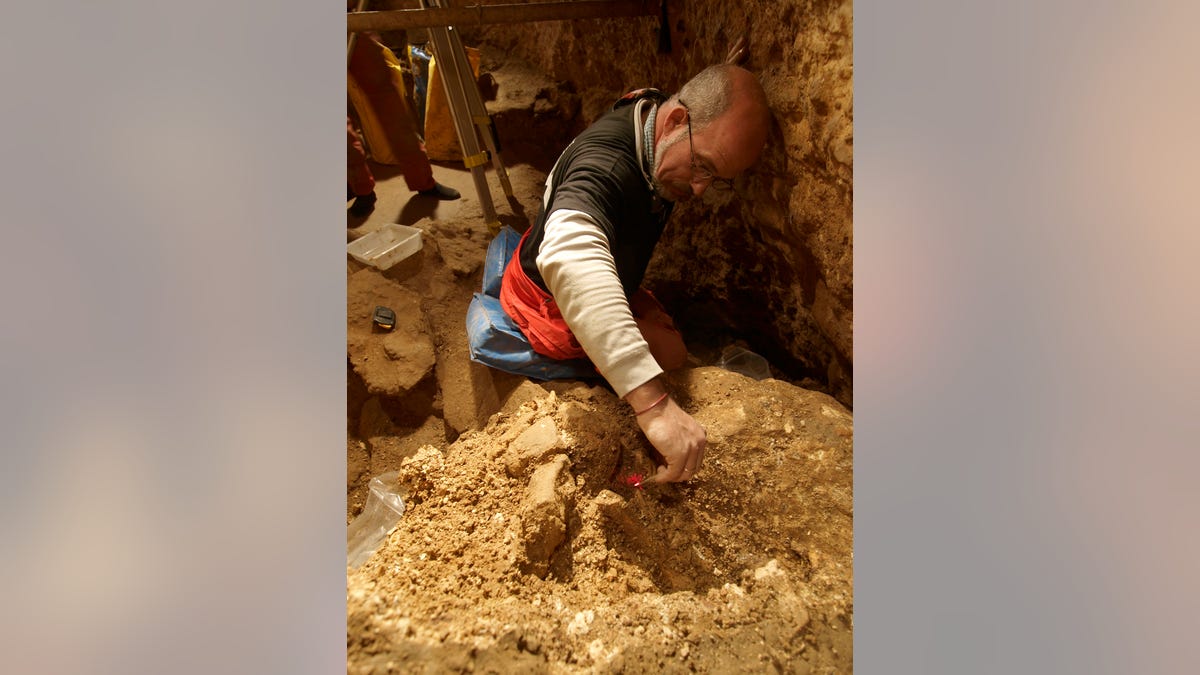
The Sima de los Huesos hominins lived approximately 400,000 years ago during the Middle Pleistocene. (Kennis & Kennis, MADRID SCIENTIFIC FILMS)
It turns out that the inhabitants living in a Spanish cave some 400,000 years ago were actually Neanderthals.
That is a fresh twist on a long-running mystery over the origins of these 28 hominins from Sima de Los Huesos in northern Spain. Initially, researchers in 2013 showed that their maternally inherited mitochondrial DNA was distantly related to Denisovans, extinct relatives of Neanderthals in Asia who lived in Siberia and apparently elsewhere in Asia.
But the finding stirred up quite a debate, since the skeletal remains carry Neanderthal-derived features.
Now, researchers of the Max Planck Institute for Evolutionary Anthropology managed to sequence nuclear DNA from fossils from the cave.
Related: Oldest Human DNA Ever Is Found In Spain, Poses More Questions Than Answers

Excavation works at the cave site Sima de los Huesos. (Javier Trueba, MADRID SCIENTIFIC FILMS)
"Sima de los Huesos is currently the only non-permafrost site that allow us to study DNA sequences from the Middle Pleistocene, the time period preceding 125,000 years ago,” Matthias Meyer of the Max Planck Institute for Evolutionary Anthropology and lead author of a study on the findings in Nature, said in a statement.
"The recovery of a small part of the nuclear genome from the Sima de los Huesos hominins is not just the result of our continuous efforts in pushing for more sensitive sample isolation and genome sequencing technologies", Meyer adds. "This work would have been much more difficult without the special care that was taken during excavation.”
The researchers credited the breakthrough with advances in analyzing DNA.
"We have hoped for many years that advances in molecular analysis techniques would one day aid our investigation of this unique assembly of fossils,” Juan-Luis Arsuaga of the Complutense University in Madrid, Spain, who has led the excavations at Sima de los Huesos for three decades. "We have thus removed some of the specimens with clean instruments and left them embedded in clay to minimize alterations of the material that might take place after excavation."

Bone powder removed from a thigh bone that yielded the first DNA sequences from the 430,000-year-old hominins from Sima de los Huesos, Spain. (Javier Trueba, MADRID SCIENTIFIC FILMS)
Related: Origins of human language between 400,000 and 2 mn years old, experts say
The nuclear DNA sequences recovered from two specimens demonstrated that Neanderthal evolutionary lineage are more closely related to Neandertals than to Denisovans. This finding indicates that the population divergence between Denisovans and Neanderthals had already occurred by 430,000 years ago when the Sima de los Huesos hominins lived.
"These results provide important anchor points in the timeline of human evolution,” Svante Pääbo, of the Max Planck Institute for Evolutionary Anthropology, said. “They are consistent with a rather early divergence of 550,000 to 750,000 years ago of the modern human lineage from archaic humans."
